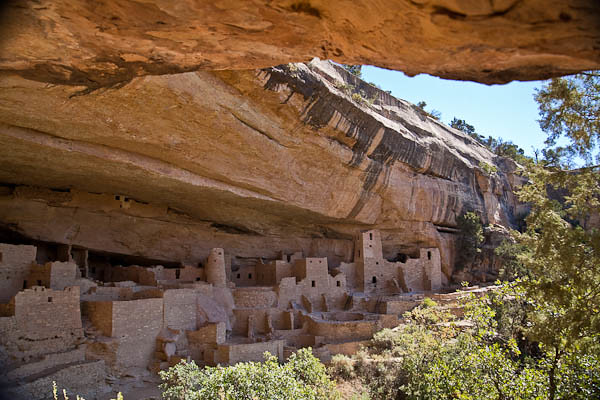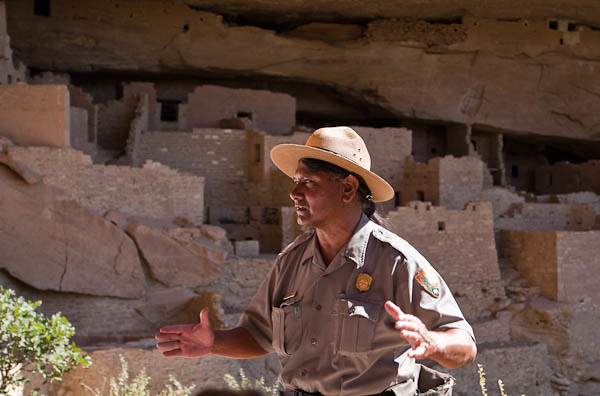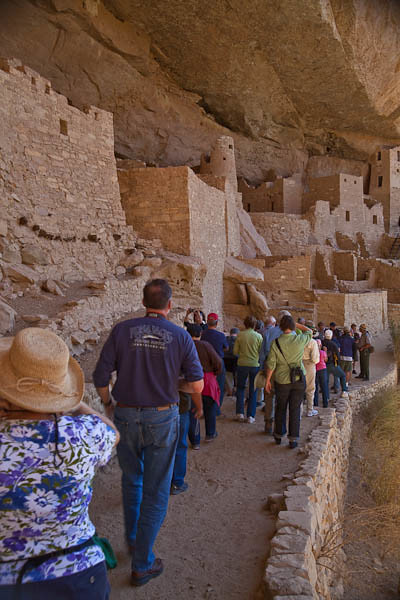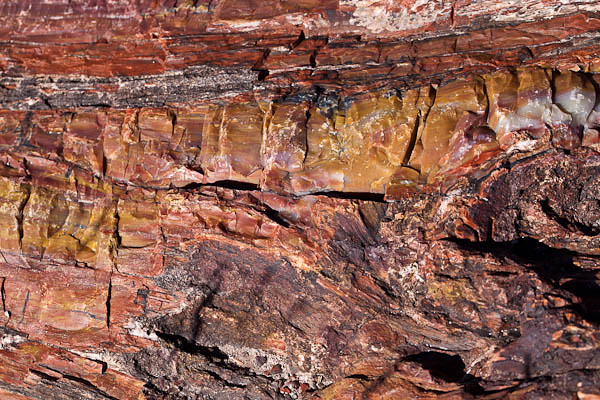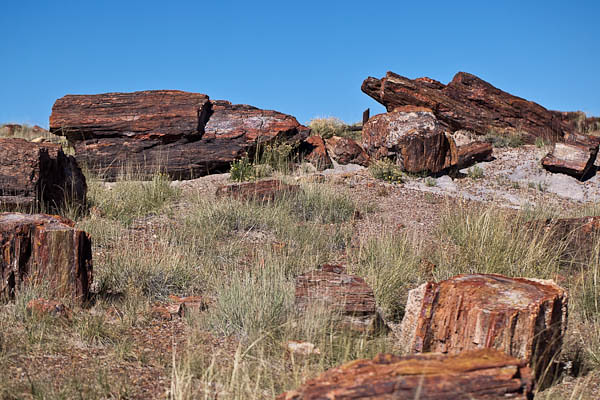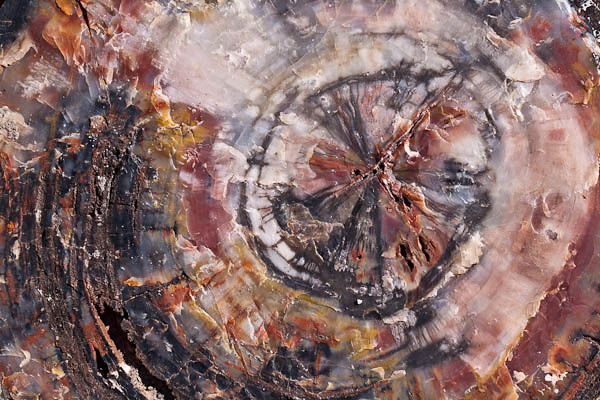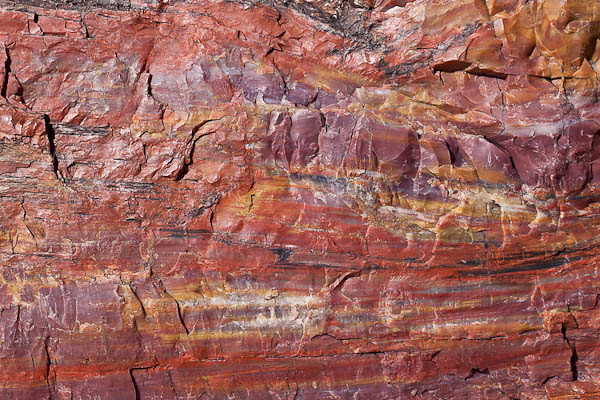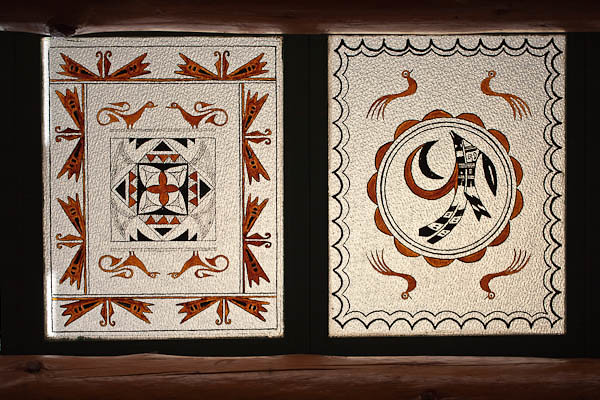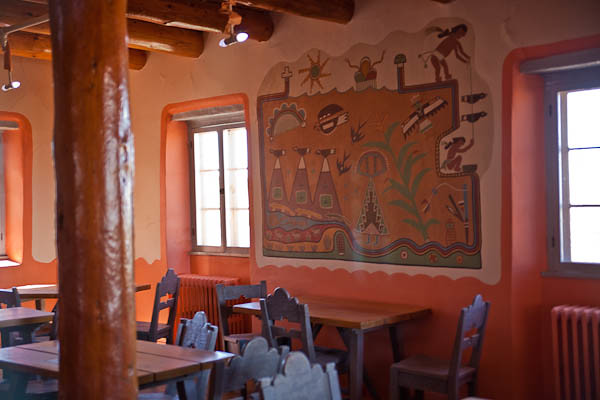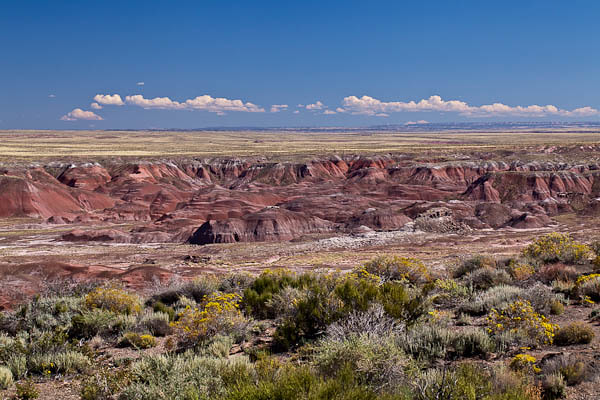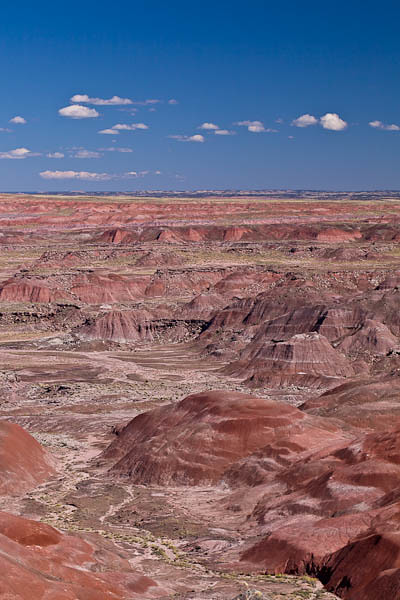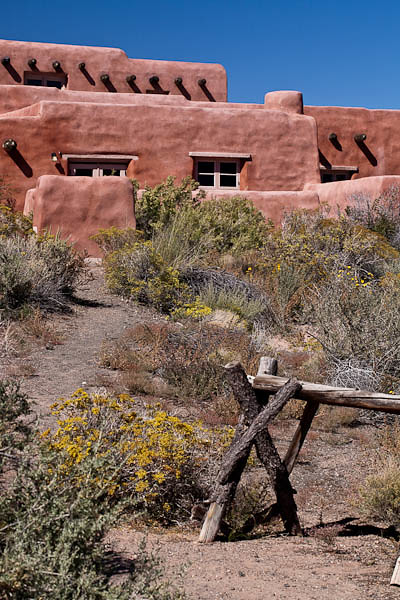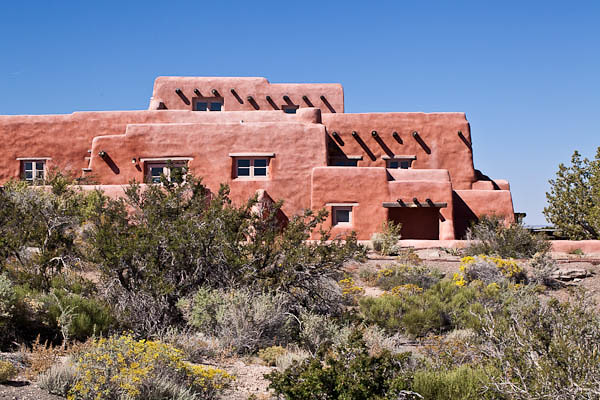Can you imagine who might have walked through this door 800 years ago? What they did during the day? How they lived, loved, worked, survived?
The Ancestral Pueblans lived in the Mesa Verde region in southwestern Colorado for over 700 years before mysteriously disappearing in just a few years. The Cliff Palace is in Mesa Verde National Park.
We had a terrific tour from this experienced park ranger. Not only was he well-informed, but he also had a sense of humor and a sense of reverence for the lands and the history he was sharing with the group. Sorry to say, I waited at the end of the tour to see if I could get his name, but he drove away before I could talk to him. I would have liked to have written a letter to the National Park Service to commend the efforts of this Park Ranger.
We did get up close and personal with the ruins, while still remaining respectful of the archaeological and cultural significance of the ruins we were viewing. What a feeling I had as I walked at the end of the line, dragging behind the others so I could not only take photographs, but also get a sense of the place. Inspiring!

